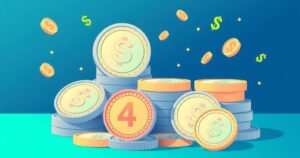Could XRP Trigger the Largest Wealth Redistribution in History?
- XRP is being viewed as a possible game-changer in wealth distribution.
- Coach JV claims XRP aims to replace traditional banks, not coexist with them.
- XRP transactions are lightning-fast and nearly costless, beneficial for users.
- Regulatory advancements may pave the way for a significant ETF approval.
- The user base for XRP shows substantial room for potential growth.
XRP’s Emerging Role in the Financial Landscape
XRP Might Trigger a Major Shift in Wealth Distribution. In the world of cryptocurrency, everyone is familiar with Bitcoin and Ethereum making headlines. But there’s a quiet player, lurking in the shadows, that some say might very well change the game entirely. XRP, despite being less flashy, has steadily positioned itself as a critical figure in the crypto universe. With an increasing buzz surrounding the potential for a monumental wealth transfer, industry analysts are starting to pay closer attention. They cite multiple factors, including advancements in regulation, growing banking partnerships, and the efficient tech behind XRP, as evidence that this asset could revolutionize global payment systems.
Ripple’s Push for Banking Integration and Speed
In recent updates, Ripple is working to secure a banking license and believes it captures a much broader vision. Coach JV, a notable crypto influencer, fanned the flames of interest with his bold statement on social media: “XRP isn’t just aiming for coexistence with banks; it seeks total replacement.” This perspective has found traction among many XRP advocates who view Ripple’s mission as nothing less than transforming traditional financial systems into something more efficient and competitive. Coinbase, for instance, seems to resonate with Ripple’s impressive USP of lightning-fast transactions—around three to five seconds—unlike the gasping days it takes for a typical SWIFT transfer. Plus, the transaction costs on the XRP Ledger barely scrape the coin jar, usually settling at just a fraction of a cent. And there’s more! With over 300 financial institutions reportedly on board with RippleNet, the momentum suggests a tangible shift in the financial paradigm is underway. However, caution is warranted; XRP’s actual transaction volumes are stagnating around one billion dollars per day, a drop in the ocean compared to a staggering 150 billion dollars flowing globally across borders daily.
Navigating the Waters of Regulation and Adoption
Regulatory approval is another factor breathing life into XRP’s potential future. Experts are buzzing about the possibility of a spot XRP ETF winning the green light by year-end, holding a whopping 95% chance, as noted by Bloomberg analyst Eric Balchunas. Should that happen, it might just usher in a deluge of institutional investment, brushing aside lingering stigmas surrounding cryptocurrencies. Ripple isn’t resting on its laurels yet, though. The company is widening its reach, currently snagging licenses for money transfers across Europe and Asia. This strategic maneuver aims for official recognition in various essential markets. Presently, XRP’s user base hangs around one to two million, relatively modest in the grand scheme of things. However, optimistic projections hint at sky-high potential with room for maybe even 100 million newcomers! Of course, hitting those heights hinges on several factors including legal clarity and institutional confidence. It’s a mixed bag of emotions surrounding XRP’s future; while there’s hope, there’s a healthy dose of skepticism tethered to the uncertainty in market adoption. Obtaining an ETF isn’t a silver bullet, and just because banks are piloting Ripple doesn’t seal the deal for widespread use.
In summary, XRP poses a revolutionary potential to disrupt traditional financial systems, but skepticism remains. As it fights for regulatory approval and broader adoption, the future landscape remains uncertain yet full of promise. The narrative of a historic wealth distribution is compelling, yet grounded in a complex web of technical challenges and market realities.




